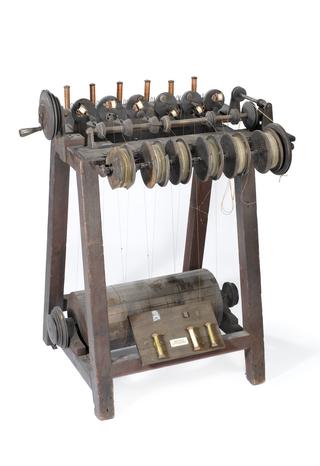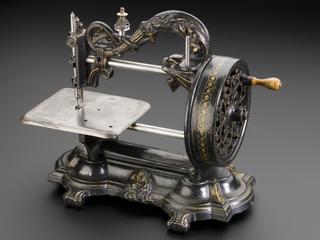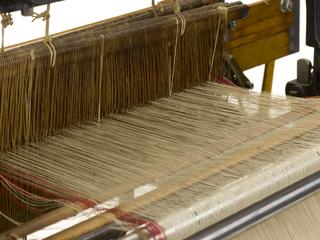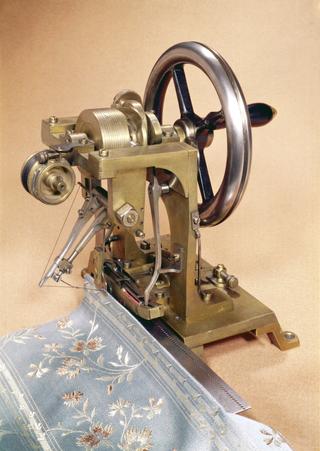
Model of Apparatus for Cleaning Carding Engine Cards.
- Made:
- c.1824 in Manchester
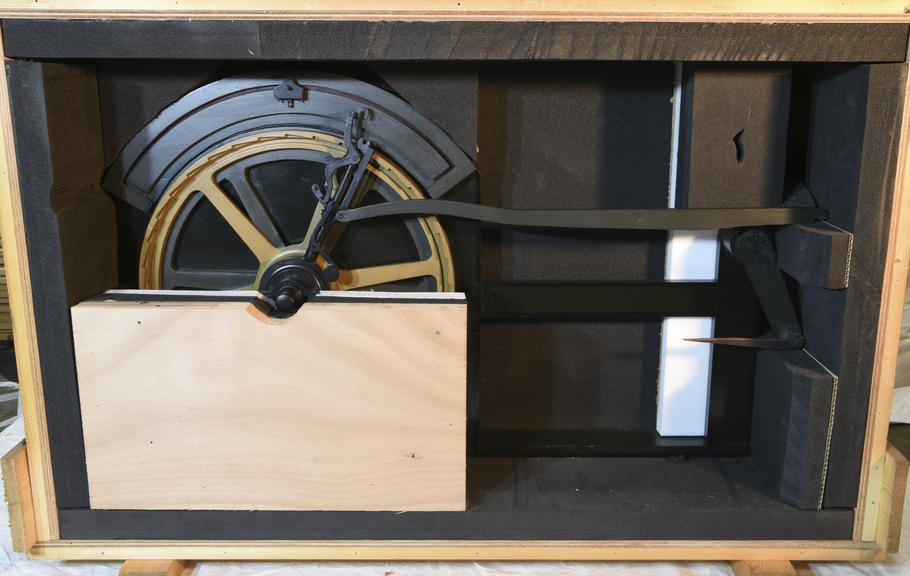
Apparatus for cleaning the top flat cards of John George Bodmer's carding engine, c.1824.
This model shows the mechanism by means of which the top flat cards in J.G. Bodmer's carding engine, patented in 1824 and intended to prepare cotton fibres for spinning into thread, were cleaned. The object sought was to clear the cards of the dust and impurities which accumulated on them while the cotton was being carded. In this machine the flat which is nearest to the taking-in end of the carding engine, where most of the dirt would be, is turned over and taken hold of by two hooks on a radial arm, by which it is carried past a revolving brush or cleaning cylinder, and being now clean is placed at the other end of the series, or near the doffer cylinder. Thus the clean flat is put where the finest carding is to be done and gradually works its way back to the other end; the frame carrying the flats being, by ratchet teeth, moved through the space of one flat for each one lifted. In the framing there are two grooves concentric with the main cylinder, running the length of the set of flats and connected at each end by radial grooves. The flats move along the upper groove from left to right to be cleaned and put each in its new place, and they return along the inner groove while carding. The mechanism for turning over the flats and taking hold of them is contained in a radial arm, which swings upon the main axis of the carding engine and receives its motion through a crank and connecting rod. The radial arm terminates in a cylindrical piece which serves as a guide for a sliding piece to which one end of the connecting rod is jointed. At the outer end of the sliding piece is a hook for taking hold of a pin on the flat. Another curved piece with a hook at its end for a like purpose is centred on the extreme end of the radial arm. It has a curved surface, upon which a pin, fixed to the radial arm, moves and gives the last-mentioned hook a motion sideways with respect to the first hook, so as to turn the flat over.
Details
- Category:
- Textiles Machinery
- Object Number:
- 1857-114
- Materials:
- wood
- Measurements:
-
overall: 635 mm x 1070 mm x 155 mm,
- type:
- carding
- credit:
- Bodmer, R.
